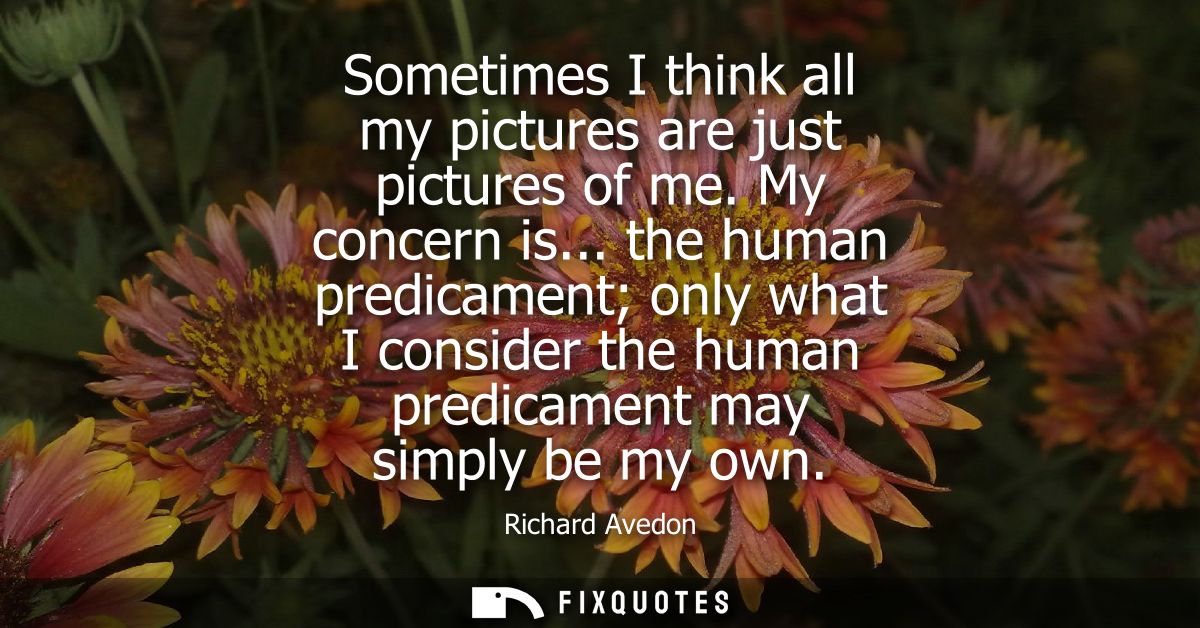"Sometimes I think all my pictures are just pictures of me. My concern is... the human predicament; only what I consider the human predicament may simply be my own"
About this Quote
Richard Avedon suggests that every act of looking outward is also a return to the self. A portrait may seem to represent the subject, but it inevitably carries the photographer’s temperament, fears, hopes, and judgments. The face on the paper becomes a mirror; what appears universal is filtered through a single consciousness. He is pursuing the human predicament, mortality, loneliness, desire, dignity, power, yet he recognizes that his understanding of it might be no more than the contour of his own psyche projected onto others.
This tension reveals both humility and audacity. Humility, because he admits the limits of his gaze: the risk of mistaking personal obsession for universal truth. Audacity, because he still seeks universality through radical subjectivity, believing that the most personal vision can open onto shared experience. Avedon’s stark compositions, stripped of background and context, foreground this paradox. Remove the world, and what remains is the encounter between seer and seen; the friction of that encounter is the image.
The statement also acknowledges the performative nature of portraiture. Sitters offer versions of themselves; photographers orchestrate, provoke, and select. What results is not a transparent document but a negotiation, an emotional contract that leaves the photographer’s fingerprints everywhere. To claim the images are, in some way, self-portraits is to own the manipulations, the biases, the longings that shape them.
For viewers, the line invites a recalibration of trust. We are not consuming pure fact; we are entering one person’s meticulously crafted account of human complexity. Yet the admission does not diminish the work. It deepens it. By laying bare his subjectivity, Avedon argues that truth in art arrives not from pretending neutrality, but from clarity about one’s position. The human predicament appears most vividly when an artist risks being seen, through others, on the page.
About the Author

